I went to the meeting with the Salvation Army where they met with the neighborhood and explained their move from 600 E. Washington to 3030 Darbo Drive. It was not well received.
Here’s the audio from the meeting.
Marsha Rummel facilitated the neighborhood meeting.
There were about 40 – 50 people who showed up, city staff from the CDBG office, Community Development Authority, Planning, Library, Public Health, Department of Civil Rights and Police Department were there. There were also people from several non-profits who work with people without roofs there as well as Lynn Green from the Dane County Department of Human Services at the county and the Joining Forces for Families worker
WHAT IS THE PROJECT?
Brad Ziemen (sorry if I spelled that wrong) who is a volunteer with the Salvation Army for the past 1.5 years and an insurance salesman who heads up the property committee at Salvation Army started off the meeting. Randy Bruce, the architect is stuck in Concerts on the Square traffic and trying to get across the isthmus.
Leigha Weber, Social Services Director at the Salvation Army starts out by explaining their services. She says that they are most notably known for the shelters.
– Single Women’s shelter – They have the only shelter for single women and can house 30 single women.
– Emergency Family shelter – They have Emergency family shelter, for people who have no place to go, most are on the waiting list for shelter or out of shelter days (90 days) and didn’t find housing. They can house 22 people in that shelter.
– Family Shelter – Family shelter is 18 family rooms and they partner with YWCA as an extension of the shelter. All shelters have case management and they work intensively with people while they are in shelter. They try to resolve barriers to housing as well as work on resumes.
– Dental Clinic – They also have a dental clinic there, which is open to the community at large who are homeless or at risk of homelessness.
– Medical Clinic – They have a medical climic with UW medical students and faculty for shelter residents but hope to expand to that to to the community if there is more space.
– Housing First – They also run 3 housing first case management programs, for peopele at risk of losing their housing, they provide rent subsidies and eviction prevention. They provide these services on site and in the community.
– Community meal – Community meal at 6:30 o Saturday.
– Food Pantry – Food pantry is in the 3030 Darbo Drive building.
Ziemen talks about dental care being free, he says it is the only one in the community. It’s a wonderful asset for the neighborhood, even the light medical, the idea is not to expand on the services, but work with services they are best at, they work well with the people they work with, but want to serve the community too. He says he hears from neighbors about how much they value them. They want people to take advantage of some of the services.
Weber points out that the 600 E Washington block was not designed for this service (its an old school) and has not weathered well. Ziemen says much of the building is a transportation corridor, they could do more in an efficient space.
An attendee asks what the goals are for their project. Ziemen says that they want to do all the services they are doing now, not expand and bring it all to one location. He reiterates there will be no expansion of services because this is all they can currently handle.
Randy Bruce, the architect Salvation Army hired shows an aerial photograph of the neighborhood.
He says there will be construction on both ends of existing building, a new chapel by the parking lot.
The other end is a is a mission house that would provide housing for homeless behind the building to be integrated into the campus.
In existing building they will create administrative space. The existing gym would remain, a little remodeling of the locker room areas will happen. Main dining facilities will be remodeled and expanded. Classrooms and computer rooms would be expanded and enhanced. The rest of the admin functions are the same. There will be improvements to the food pantry area. Chapel is one story, mission house is 2 stories, which is the same height and scale as gym is now.
Talks about how they will use masonry to tie the addition to the older portion of the building aesthetically. Chapel will stand out and is a signature piece of the building and the mission of the Salvation Army.
QUESTIONS/REACTIONS/CONCERNS
The group asks questions and makes comments
– Explain the housing portion better. There are 2 levels one is family housing and the other is single women and transitional or emergency care housing. They will house 18 families and 30 single women in shelter.
– What if there is an emergency, can you take overflow, like the single men? No, because they serve single women, that is what they are good at and they don’t want to have any issues with men in the building.
– Woman says that 6 years ago the people in the condos next door offered to pay 30% of the cost if Salvation Army left the neighborhood, are they still willing to do that? They weren’t aware of that offer.
– Architect says the big difference in the project is that the facilities will be built as housing instead of the building where people were never intended to be housed.
– Ziemen says they will actually have a smaller footprint than they have now. They will have one soup kitchen instead of one.
– Who will use the facilities? Length of stay? Where will kids o to school? What will life in your facility be like? Families can stay up to 90 days and single women can stay up to 60 days if they have case management. Families run he gamut with different partnership arrangements of the mom and dad, single moms and dads, there are newborns to 17 year old kids, there ware working parents and persons not able to work due to a disability. They cycle through every 90 days and there are new faces and circumstances every time. The women are 18 – elderly. Essentially, they look like the people in the room.
– What is the average length of stay? It is getting increasingly difficult to find housing and it is trending towards 90 days. About 60 days was the average.
– If the families hit the limit that they can stay, where do they go? That is the most difficult question they face, if they hit 90 days they work with their case manager to try to do something else, maybe the warming house, sometime in their car, sometimes doubling up with other people or relocating to a different city.
– What about the kids, will they be playing in the neighborhood? Where will they go to school? They say the kids will participate in the community center programming, currently they do that but transportation 3 miles is a challenge for them. Groups offer recreational programs, a fraternity does tutoring on Friday nights, Play and Learn comes in from the schools. They try to provide alternative programs. The Transitional Education Program takes them to their school or origin or the current school, that decision is left up to the parents. They try to create patnerships.
– How does this fit in with neighborhood plans? Ziemen says it fits in the new zoning codes. Heather Stouder, city planning department staff that will be writing the report on the project explains that the comprehensive plan says this is medium density residential and that includes churches, schools and community centers. This would require a conditional use, which if review by the plan commission. You have an opportunity to give input at that time. The addition of the mission house, due to the proximity to a park asks for a conditional use review. She says the plan commission needs to find that this is not detrimental to the public health, welfare and safety of the neighborhood. That they can provide municipal services and the it does not impair the uses, values and enjoyment of other uses in any foreseeable manner. Those are the three findings they have to make that seem most relevant to this project.
Where to people
– Where do people go during the day time? Won’t additional kids take away from opportunities to be in programs for the kids in the neighborhood? No, it won’t take away opportunities for kids in the neighborhood.
– What about capacity? They need to work it out through scheduling, the intention by no means is to steamroll programs in existence and take over them, we would use space when not used or fill up classrooms not at capacity. No intention to take away from what neighborhood needs. Single women are there only at night from 5:30pm to 8am, the day is theirs for school or work or whatever, come to case management meetings. The emergency shelter is also only a nightime use, 5pm to 8am, they go to The Road Home during the day. Where is The Road Home? Olin Ave.
– What do they do when they leave, tey don’t hang out in the area, might they go downtown? A (formerly) homeless man in the room says that people are creatures of habit, they will go to the places they go now. They will use computers at Hawthorne library, the will go to First United Methodist Church and Bethel where some of them volunteers. They will use services in the neighborhood and spend money here. They are busy during the day and they will blend in well. Weber says that there may be a shuttle service to downtown to ease the transportation burden, that is one of the biggest concerns. She explains that unless you are disabled, they are required to leave family shelter for 4 hours a day and they check people in and out.
– 600 E Washington seems like a better place for the services, why not sell 3030 Darbo and build on E. Washington instead? Ziemen says that they exhausted their search trying to find a place and hey realized the core of services are on Darbo Drive (?!) and that they work well with the community here, that the deficiencies of the building on E. Washington were difficult and the best opportunity was here. The land is available. They did think about selling both. Don’t you still have logistics problems? Bus service was the key. They know services downtown are key, but they feel as the city pushes out and grows they want to be part of that expansion, but they don’t want to go too far out.
– If they had a buyer for 3030 Darbo, would they sell? The Major, Loren Carter jumps in and says that 630 E. Washington wouldn’t work. The corridor requires a 6 – 8 story building and they looked at it, and the previous alder said she wanted us to move everything to Darbo keep everything there at 600 E Washinton. (?! Metcalfe’s isn’t 6 – 8 stories. And the previous alders isn’t here any more!)
– How will dental services help them if you have to be homeless or near homeless to use the services? Weber says they would like to expand those services (but the other guy said they weren’t expanding services). It is currently 2 days a week and they would like it to be 5 days a week morning til night if they have the volunteers. They have a plan to provide services for people without insurance or can’t afford it. In truth, that is what they do now and they plan to expand.
– We don’t have programs for 3 – 4 year olds in the neighborhood, how are you going to add more kids to our programs when we don’t have programs for the little kids? Weber says that they would have to fit into programs that are here now, if we serve 5 and up, then that is what they would be eligible for as well.
– Will there be any parking expansion, currently the Department of Corrections takes up all the parking, where are the neighbors supposed to park? They park a block and a half away. (Sigh, sound like a luxury to me! That’s a good parking spot in the downtown area!) Ziemen says that they are working to meet the guidelines set by the community. There are city and state issues involved and their hands are tied. They talked to the owners of the building and they are aware of the issues. Rummel suggests the neighbors ask for 2 hour parking and then get residential parking permits to allow the residents to park there.
– Why didn’t someone go door to door and notify residents about the meeting? Why weren’t people notified? Rummel asks if the person is a Blooming Grove resident and he is. She says that she only has addresses for the City of Madison and that is who she sent them to and apologizes for the issues with different jurisdictions. He says that if the Salvation Army thinks the community is importan, they should go door to door.
– Tony Casteneda – not sounding very progressive . . . a little painful to listen to. He says “NO” to homeless in his neighborhood, even tho he works with the homeless.
– Disappointed the project isn’t expanding shelter for the homeless. Concerned about increase in people and traffic in the neighborhood. She talked to current and former alder and there weren’t that many complaints about how it impacts the neighborhood. There were some issues a year ago when people were dropping off and waiting to pick up women from the shelter. If there are going to be more children to serve she hopes they bring more staff. They don’t have stuff for little kids, no day care center, not one. Says ey could partner with Head Start to get them in the neighborhood, all they would have to do is lower the windows. They really need daycare. Lots of people working in the hospitals, 0 – 5 is the huge need.
– Someone says there is a community center in the neighborhood but no one goes there, it costs $12 to go in, not aware of what services are there. There is also respite care that people can use. People are not informed about the services in the building, they need an information center. She is concerned about domestic violence, she used the single women’s shelter and there were lots of issues with confrontations between family members. The Salvation Army staff are not licensed and the wrong people get arrested when they call the police.
– Someone else says that respite is not daily day care, its not in the neighborhood, what they really need is jobs. Will there be jobs for the people who live here? The businesses here won’t hire people from the neighborhood, none of our neighbors work here. There is a loud AMEN! and clapping at this comment. The major says that all the jobs are posted on craigslist, they take resumes, they hire qualified poele, they don’t discriminate against anyone from the neighborhood, they would look at anyone, they would hire anyone qualified. They also post on the bulletin board, UW and Jobs in Wisconsin.
– Weber says that violence is not acceptable on the shelter floor, the perpetrator is immediately asked to leave, they don’t condone it. They do their best to work with te family, but if someone’s safety is at risk all bets are off with them. Woman who brought it ups argues, says there was a kid in a body cast when she was there, the staff aren’t licensed and don’t know the legal dynamics for conduct that they are accountable for. They call the police, but there is favoritism and they play happy friendly play house with people.
– Lynn Green, the Director of Dane County Human Services says that htey are licensed to protect kids and deal with issues and they work closely with Salvation Army. She wants to make sure they keep Joining Forces for Families in the building. They work well together and will continue to do that and she hopes they develop partnerships in the community.
– Speaker is concerned about capacity. Will the vulnerable neighborhood be knocked down, or is there something to offer to the neighborhood. Will the homeless people and the Salvation Army offer something, is there a plan to build the capacity of the Salvation Army and the Community. Ziemen says they need to work as a team, they know what they can do working with the community and this is what they are good at. It comes from their hearts, from the bell ringers. If they work with another subset, they know they can’t. They can’t help everyone, but they can help the people out there. They would love to expand, but they don’t have the capacity, they are good at what they do, they don’t ask for a lot of money and there will be no future expansions. Persons says to maintain what they have here, the younger child programs, there needs to be an increase in capacity to maintain the level of service they have now. Ziemen says that is good input and he will write it down.
– Alder Rummel asks the Major if they would more actively recruit in the neighborhood so that the faces of the neighborhood are reflected in the staff. Major sticks his foot in his mouth by implying that people in the neighborhood are not qualified and a neighbor responds!
– Will the offices and programs that are here like Community Action Coalition, Joining Forces for Familes, etc still be here, are there any changes in that? Weber says yes.
– Ruth Ann Schoer (who used to work at the Salvation Army until a year ago) asks some softball questions – trying to lead them to say that they will have better economies of scale and that will save money and they can increase their capacity. She also says that the Salvation Army runs on volunteers and that people from the neighborhood can volunteer.
– Woman is concerned that the police give tickets to people who are in the neighborhood that are not escorted by someone from the neighborhood, how will they treat the homeless? How will they know who they are?
She says there are so many police that she’s afraid to come home because she doesn’t know if something happened or if the police will intimidate her. She is afraid to invite people over and she’s afraid to come out of her home because she will be harassed by the police. Will the homeless be harassed by the police? Also, she says she has a computer training certificate and wanted to volunteer but she has asked several times and been told no. Plus, she doesn’t like the computer lab fee. Weber says they have a good relationship with the police and they communicate when there are not issues as well as when there are. A police officer has a totally inadequate response. Unfortunately the audio on that is hard to hear but you can try listening to the first link. He says he’s sorry they have that perception of the police department. He says people want us to be there, that is why we are there. He’s sorry she couldn’t go to the building she wanted to. He says their concerns are about traffic and traffic flow and parking. If they change the wording on the parking signs then they might get people who are not their clientele. They are working hard to make this a community we are proud of. The police act on people’s behavior – he says that that might be her perception, but there is nothing he can do about that perception. Woman says its just the truth, nothing about you. Rummel asks about people coming and going from the building, the officer says it is just like anyone else, they act based on complaints and behavior.
– A second woman adds to the concerns about the police.
She says she lived there for two years and in addition to a similar story about intimidate, she also says her door was kicked in and someone was shot outside. Says they need to settle things down before they bring more to the neighborhood. If a kid gets hurt the finger will point at the Salvation Army.
– Another neighbor is concerned about the need to develop businesses in the neighborhood. They need jobs, they need to serve the people they have in the neighborhood. Weber says there may be some opportunity for economic stimulus with education and the courses that they have, but they can’t guarantee that.
– Neighbor says they think its a good project, but not an improvement for the neighborhood. More issues with the computer labe being not open and charging people. Says the Salvation Army is not doing the things they say they are going to do. Police are doing a great job. Need to integrate in the community – we have no day care and while this sounds good, the devil is in the details. You say there might be a shuttle bus, but we need to hear there is one. You charge people to use the computers who can’t afford to feed their famility and limit the time to use the computer that might help them. We can’t take on 60 – 80 more beds here and the situation that it brings and have a vibrant healthy community – would you like to visit, not really.
– Single mom wants to know what will be done about the park, the bike path, the front steps of the Salvation Army and people hanging out and drinking and vandalizing things. She worries already about sending her kids to the park to play basketball and now she will worry more. At the bus stop people are sleeping and even one person was sleeping across the bike path. Staff at Eastpointe already spend the mornings cleaning up trash. They have security cameras. She parks her bike outside and wants to know someone won’t pee on it. She asked to have a second floor apartment because otherwise she has to keep her windows closed. Worried about traffic in the neighborhood. She reminds them the library limits computer time. She appreciates the dental clinic, but Access also has one and they can walk to it. She would love to see a whole program, not just Will and ?, they need more black men showing kids that they can do something with their lives, that they want to wear a suit and tie when I grown up I want to go to college. I need that here. The Salvation Arny does wonders, she comes here every day, they feed me, I use the food panty and Toys for Tots. But having the mission house here isn’t the best and I don’t feel comfortable with it. If you lived here, would you live on the first floor and lave the windows open when you sleep or leave during the day?
Persons says they lived here 17 years and plans to retire here unless they move out of state. Worries about the attitude of the Salvation Army and police purveyed on the people of the neighborhood. Don’t do things to or for us, we want to build ourselves up, they neighborhood officer that says we are trying to get out of the neighborhood, we have a great neighborhood, we want a community center, we had a contract with Salvation Army and they wouldn’t sign. They said we would have a computer center, no charge. The city paid for some of it, but a a lot of things were supposed to provide infrastructure, but it didn’t happen, and if this happens I hope Salvation Army will do what they said they would do, be a community center for the neighborhood.
Justice Casteneda says that the Salvation Army was started by William Booth and is based in London and that is where they get their orders from. The Major says that is not true, they don’t get their orders from London. Casteneda says that their national organization says something different. They get their orders from Chicago, the regional office is in Chicago. He asks if the Salvation Army offers comprehensive women’s reproductive health – the Major says no. Casteneda asks how much they paid for the building. Major says it was given to them by American Family. He asks how much they are selling the other building for? Not sure there was an answer. Casteneda says that they hear a lot about the university effect, but the kids here won’t get the jobs, we hear you hire qualified people, but they are alienated, admissions makes it hard, if you are willing to make money, would you be willing to form a holding company and put the building in the hands of the neighborhood. The major says he has no idea what he is talking about. Casteneda says that this is about the children and the trauma they experience, when you aggregate the amount of trauma kids experience – they are twice as susceptible to PTSD as someone in the military. He wants to know how we will mitigate he trauma this will bring in that affects our neighborhood. He talks about wanting to be a neighborhood for police, teachers and city workers. He talks about Owl Creek, we put neighborhoods for people of color and then tell people to deal with it, the community workers, teachers and police. We already have a disproportionate amount of contact with police for people of color. He wants to know if the major will open a holding company and let the revenue be owned and operated by the people who live here? The major says no, they money they make would come back and fund this budget, not going into anyone’s pockets, a facility is not made from nothing. Tax credits cover 70% and they have to raise 30% elsewhere and then they are using private money for the chapel.
Rummel asks about the WHEDA process. They say they want to get land use approvals in place in 2013, for a early January submittal in January and there would be a decision in March or April. Once they announce they would have to get a syndicator. Rummel says the project is contingent on getting tax credits.
A person asks what assurances to homeowners have for their property values? if crime increases, a shooting happened in her front yeard, she lived here since 2008, do i need to increase the thickness of glass to protect myself from bullets? The Major says that Pat Schnieder did an article on 15 shelters in neighborhood in Philadelphia and neighborhood values increased 1.8%. Of course that is not Madison, not Darbo. He understands from police that it is not the local residents that cause the problems, but people from other places. People are concerned that this will bring in more people from outside the neighborhood.
A man brings up a recent manhunt in the neighborhood, talks about people living by the storage units on Fair Oaks and this will bring more homeless people. He lived in a homeless shelter, he worked for Porchlight for 2.5 years, they should be looking at your neighborhood, not ours. Someone says that they live in Maple Bluff. Another person says that people need to call the police when there are problems instead of closing the windows.
Dean Loumos says that it is a great concept of putting services together, it looks good on paper, but location, location, location is important. He runs a nonprofit, he has tried to do projects and he had learned the first issue is community impact, this is a great program that does great work that is important, but it shouldn’t be here. He has had to go to a neighborhood and explain his services and he learned you need to explain it well. You have to find a way to say yes somewhere, you have to answer questions.
A person says that people are scared if you bring children in the philanthropists will spend their money there and they will not be helped. They are not celebrity or good for PR.
WHAT’S NEXT?
Randy Bruce says that they want to understand the comments they heard hear tonight and see which issues they can address. There was some valuable input, some issues are more regional based and larger than this project. The will make changes in the plan and consider the ideas about the programs. They have not started the submittal process yet, generally they were aiming for September 1. If they make a submittal to city the ciy for approvals, the City will send out notices. Rummel says that will only be 200 feet from the project. Rummel will be advised, they will post on the neighborhood website, post at building, may have another neighborhood meeting and work on other ways to get the word out. If they can get through approvals this fall, that is the goal, if there is common ground, they will apply for WHEDA tax credits in fall, they need an approved plan to go to WHEDA.
People should contact the alder if they have issues. They should participate in the neighborhood association which will meet at the end of July. They are also encouraged to participate in the public process. Rummel points out this is a conditional use and it will only go to Plan Commission, not the council. Plan Commission is a very important meeting and the Plan Commission can adopt conditions with the approval.
MY OBSERVATIONS
Expansion of Services
First of all, what the hell, no expansion of services? You gotta be kidding me given the huge waiting lists! (Ahem, afterwards I found out that they will be increasing the space for single women shelter and they can hold up to 48 people, but that is not what they said in the meeting.) Also, everything needs expansion, but especially the families need expansion. They turn away people from the emergency shelter and people wait long periods of time (yesterday I heard months) to get into the shelter.
WHEDA Goofiness/Shelter Eliminated
First of all, that WHEDA funding is absolutely goofy. You can’t get WHEDA tax credits for a shelter! That is not a permissible use. Again, after the meeting I asked about this and they said that the way it would work was it would be considered transitional housing for the families and they would need to sign a 30 day lease. They say they are working with WHEDA and have been encouraged to apply. Wait! What?! Really, there will be no family shelter? What happens to the warming house in all this? The family housing upstairs is becoming tiny apartments with their own restrooms which will be really nice for the people staying there, will there really be a “shelter” any more?
Other Funding Goofiness
I also asked after the meeting how much the project was going to cost, they said about $8M. So they have to sell the E. Washington facility for $2.4M or raise the difference between the sales price and $2.4 which includes the cost of the chapel. The current site is 58,377 sq foot at property in the area has recently sold for $16/square feet after the city demolished buildings, did remediation and gave TIF funding. I’m not sure that is a fair comparison, but it does look like they need to make sure they get as much money as they can get. Personally, I think they should temporarily use Darbo and rebuild where they are.
Policing
Ugh. Seriously, this bullshit again. Making people have ID to get into their own neighborhood – I thought we were done with that shit. So disappointed in the “community policing” of the MPD. Also disappointed in the implications that the homeless bring crime to the neighborhood. Salvation Army is a block and half from my house and I don’t experience crime as a result of them being there. Sad to have the police encouraging that stereotype.
Major Foot in his mouth
Wow. I was stunned by his implications that people in the neighborhood would not be qualified to work at the Salvation Army. It was truly insulting and unimaginative.
Neighborhood Objects
I was, quite frankly, disappointed in the neighborhood and service providers that spoke against. I understand the neighborhood has many needs and doesn’t get much attention, that their only amenity or services seems to come from the Salvation Army building and that they need to use this opportunity as leverage. And, they need to make sure they get a good deal from the Salvation Army that they can count on and that they have had a bad experience in the past. On the other hand, they also played into all the stereotypes about their children being traumatized and crime caused by homeless persons. I didn’t really hear any comments about the building, how it sits on the lot, what it looks like, etc. All the comments were about programs and people using the facility. The parking comments seemed SO absurd to me when there is that GIGANTIC parking lot there – made me giggle, there has to be a solution in there somewhere. 2 hour parking and residential parking permits seems like a good start. Salvation Army could probably then get revenue from the state workers and the community would get their street parking back. Of course, I think there are some other parking restrictions the police asked for that might be able to be modified as well.
What about the people staying at the “shelter”
Transportation, transportation, transportation. Sounds like the facilities will be better. They told me afterwards that the women will be 6 to a room. I’m still unclear where the family warming shelter is, but I think that is on the first floor too. Having restrooms in the rooms will really be nice as well – but I am concerned about all the implications of moving what has traditionally been a shelter to transitional housing and the only shelter being for 22 people a night. Especially when they told me that there were 3 pages of people who called in that day. The need is crushing and shelter for 22 people per night isn’t near enough. We need more shelter space, we need a bigger project as a result if they are spending $8M, not just more of the same inadequate amount of space.
Sorry this took so long . . . need more hours in the day!

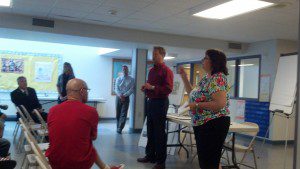
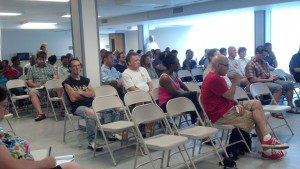
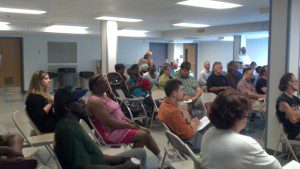
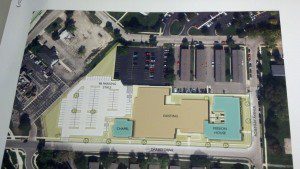
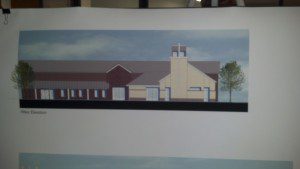
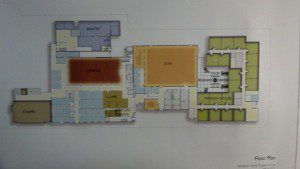
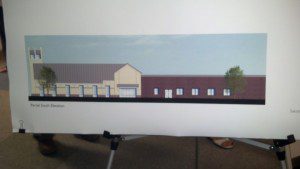
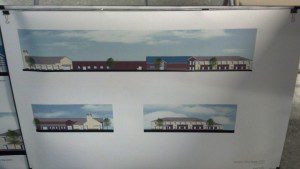







When I worked at the Salvation Army in the early 2000’s they wanted to move the shelter out by MATC. Also, Mr and Mrs. Ronald McDonald (Ray Kroc and Joan Kroc) left over a billion dollars for the Salvation Army to build buildings across the united states. The money can not be used for funding staff only building the buildings. So a lot of the billion dollars is sitting gaining interest. I have to believe that Kroc money is being used to build this building.
And perhaps the money they get from selling the land will be used to fund staff????? Who knows? But most likely the money is coming from the Kroc fund.
Being driven into poverty myself and having to use McDonald’s as my cheap coffee shop I think that the Madison Police could learn from the Kroc’s on how to treat people.
Under the former mayor he allowed the police to turn into a version of Milwaukee police and their abuse. And now this mayor has to clean it up.
I wish you would do a documentary on homelessness. This houses on the street are the solution you can work toward in the documentary, you have it in you to do this. I don’t know you; but I have watched your work.